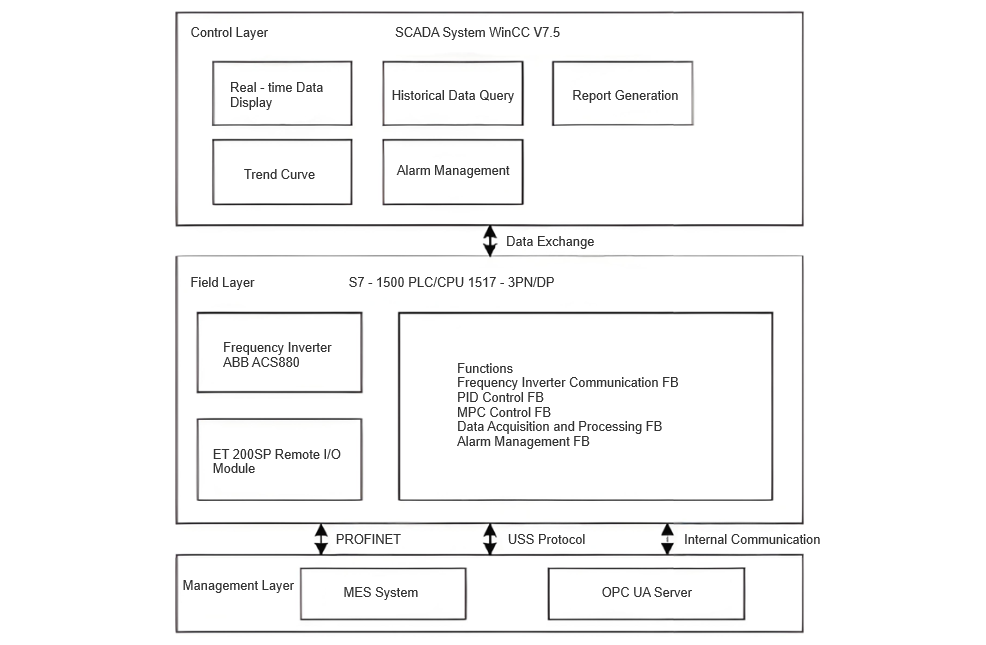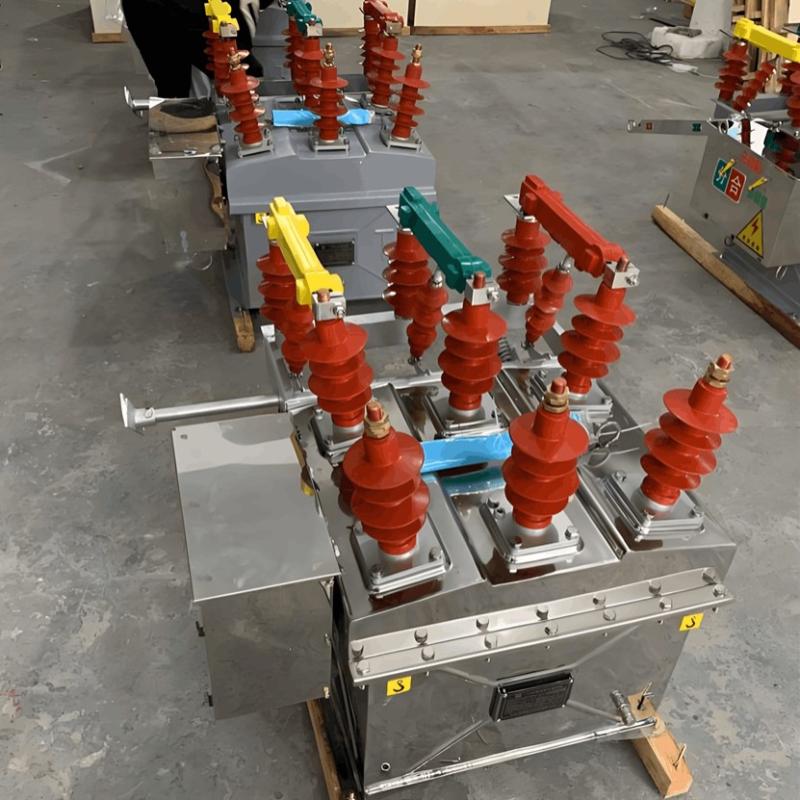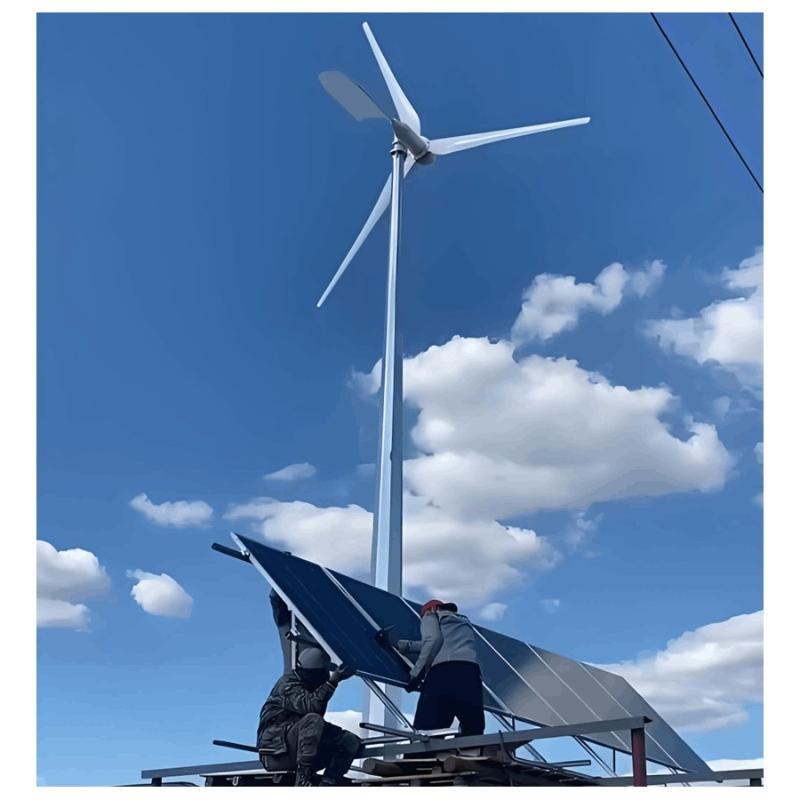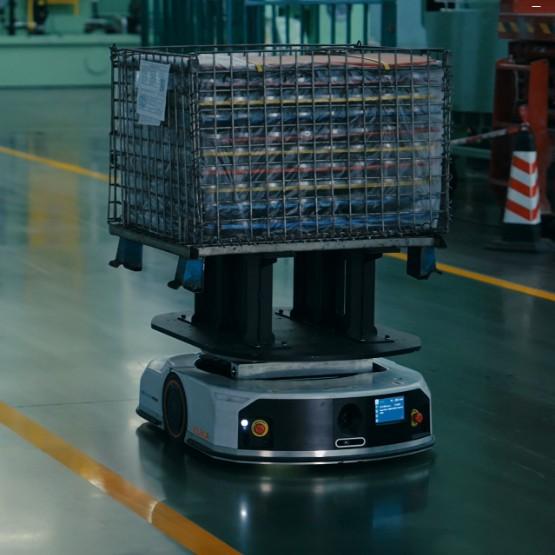Bina nîşanên endamê, sîsteman avtomatîkî elektrîkî di ser xebitina girtinê de li gor çendî yên barkirinê ve tevahîn koye. Operasyon ên bi dawiya serastî şûna hewceyên barkirinê ya vekerdar hatiye girîng bikin û kontrola têkiliyê ya zorî çêkirin. Teknolojîya rehberkirina dawiyeyê, wekî metoda barkirina pêkanî pir derbarandî, çareseriya birêvehatî ye ji bo van pirsgirêk. Ew studiyayek dike sîstemaya avtomatîkîya elektrîkî ya navcheyê wekî misal da, yê ku were bixweberîn destpêkên berhemên rehberkirina dawiyeyê û efektivîyeya wateyan werin biguherînin, bi tenêya daneya referansî bide ji bo seretemîna wateyan di senaryoyên endamî yên serasêmî de.
1 Rewşa Niha û Destpêka Bexsînî yên Rehberkirina Dawa
1.1 Peralatan Nîşan
Sîstemaya avtomatîkîya elektrîkî ya navcheyê li gor sa azdeha rêzikîn: sîstemaya daxistina rûbar, biryârên motor, û sîstemaya kontrol. Sîstemaya daxistina rûbar barnameya 10 kV, transformator, û 400 V low-voltage switchgear, di structureyê tree de daxistin. Motor drives an jî asayişên motor nekavîn bi metoda direct-on-line an star-delta reduced-voltage starting. Hulberên pump an jî herî mezin yên peralatan li ser dema, guherîn water pumps, cooling water pumps, û feedwater pumps. Ev cihazan bi dawiya serastî xebitandin, bi valve'kan flow control kirin, ku hewceyên wateyan mezin dide. Sîstemaya nîşan serbest e, bi managementê ya parçeyî. Sîstemaya monitorî ya bingehîn bi Ethernet industrial bi sîstemaya kontrola field communication kirin bi tenêya display central û remote operation. Lekin, sîstemaya kontrol nîşan algoritma kontrolî pir derbarandî nayê, ku çêkirin energy management û process optimization.
1.2 Destpêka Bexsînî
Li gor rewşa nîşan, destpêka bexsînî sîstemaya avtomatîkîya elektrîkî li gor seretemîna wateyan û kontrola optimal. Li ser hevdest bexsînî teknolojîya rehberkirina dawa, bi tenêya rehberkirina dawiyeyê, bi tenêya dawiyeyê, bi tenêya dawiyeyê, bi tenêya dawiyeyê, bi tenêya dawiyeyê, bi tenêya dawiyeyê, bi tenêya dawiyeyê, bi tenêya dawiyeyê, bi tenêya dawiyeyê, bi tenêya dawiyeyê, bi tenêya dawiyeyê, bi tenêya dawiyeyê, bi tenêya dawiyeyê, bi tenêya dawiyeyê, bi tenêya dawiyeyê, bi tenêya dawiyeyê, bi tenêya dawiyeyê, bi tenêya dawiyeyê, bi tenêya dawiyeyê, bi tenêya dawiyeyê, bi tenêya dawiyeyê, bi tenêya dawiyeyê, bi tenêya dawiyeyê, bi tenêya dawiyeyê, bi tenêya dawiyeyê, bi tenêya dawiyeyê, bi tenêya dawiyeyê, bi tenêya dawiyeyê, bi tenêya dawiyeyê, bi tenêya dawiyeyê, bi tenêya dawiyeyê, bi tenêya dawiyeyê, bi tenêya dawiyeyê, bi tenêya dawiyeyê, bi tenêya dawiyeyê, bi tenêya dawiyeyê, bi tenêya dawiyeyê, bi tenêya dawiyeyê, bi tenêya dawiyeyê, bi tenêya dawiyeyê, bi tenêya dawiyeyê, bi tenêya dawiyeyê, bi tenêya dawiyeyê, bi tenêya dawiyeyê, bi tenêya dawiyeyê, bi tenêya dawiyeyê, bi tenêya dawiyeyê, bi tenêya dawiyeyê, bi tenêya dawiyeyê, bi tenêya dawiyeyê, bi tenêya dawiy......
3 Rewşa Bexsînî yên Teknolojîya Rehberkirina Dawa
3.1 Nivîsandin Sîstemê ya Daxistin Rûbar
Li ser hevdest teknolojîya rehberkirina dawiyeyê, ev studiya sîstemaya daxistin rûbar nîşan bixweberîn. Ji bo sîstemayên high-voltage, 10 kV switchgear bi intelligent vacuum circuit breakers anjîn kirin ku ampera rated current wekî 1,250 A û breaking capacity e 31.5 kA. Microprocessor-based protection relays werin integre, multi-function protection including overcurrent, short-circuit, û ground fault, bi response time under 20 ms. An electric power quality monitoring system were also introduced, using Class A-grade high-precision sensors to monitor parameters such as harmonic content, voltage fluctuations, and three-phase unbalance in real time, ensuring system stability.
Ji bo sîstemayên low-voltage, 400 V system were the focus of the upgrade. Dedicated inverter feeder circuits were added to the existing system using independent feeder cabinets equipped with intelligent molded-case circuit breakers. The rated current was selected between 400 A and 630 A based on load requirements, featuring electronic trip units for precise overload and short-circuit protection. Each inverter circuit is equipped with an isolating switch matching the circuit breaker’s rated current and includes a visible break feature to facilitate equipment maintenance.
For harmonic mitigation, active power filters (APF) are installed at the inverter input side, with specific specifications as listed in Table 1.

For the optimization of grounding systems, this study adopted the TN-S wiring method, separating the neutral line (N) from the protective earth line (PE) starting from the distribution cabinet. The main PE line uses copper conductors with a cross-sectional area of no less than 95 mm² to ensure a ground resistance of less than 1 Ω. Equal potential bonding bars were added at critical equipment locations such as inverters and motors, using copper conductors with a cross-sectional area greater than 16 mm². This effectively suppresses common-mode interference and enhances the system's EMC performance [21].
3.2 Selection and Parameter Optimization of Inverter Equipment
The selection of inverters is based on precise matching of load characteristics and process requirements. For pump loads, vector control inverters are chosen, with their rated power strictly corresponding to the motor's, and an overload capacity of 150%/1 min. This study selected the ABB ACS880 series inverter, which features DTC (Direct Torque Control) technology, with a torque response time of less than 5 ms and speed control accuracy of ±0.01%. Considering the on-site environment, a sealed inverter with an IP54 protection rating was used, equipped with a forced air cooling system, ensuring a cooling airflow of no less than 1 m³/(min·kW).
For parameter optimization, the focus is on adjusting the PID control parameters and utilizing the self-tuning algorithm built into the inverter. Through step response testing, the optimal proportional gain Kp, integral gain Ki, and derivative gain Kd are automatically calculated. The calculation formula for the PID controller output u(t) is:

The built-in auto-tuning algorithm of the inverter is used to automatically calculate the optimal proportional gain Kp (range: 0.1–100), integral time Ti (range: 0.1–3600 s), and derivative time Td (range: 0–10 s) through a step response test. Acceleration time is set to 10–30 s and deceleration time to 15–45 s to effectively prevent water hammer effects. Torque limiting is enabled with a setting of 120% of the motor's rated torque to prevent overload. For fan loads, the inverter's energy-saving mode is activated: under light-load conditions (load rate < 50%), the output voltage is automatically reduced, with a maximum reduction of up to 20%. Meanwhile, the V/F curve is optimized by increasing the voltage output in the low-speed range (0–10 Hz) to ensure sufficient starting torque.
A sleep-wake function is configured: when the operating frequency remains below 10 Hz for 60 s, the inverter enters sleep mode; it automatically wakes up when the system pressure drops by 5%, further improving system efficiency. In the basic inverter settings, the carrier frequency is set to 4 kHz. Based on the actual requirements of the power plant, the overvoltage and undervoltage protection thresholds are set to 418 V and 304 V, respectively. Additionally, the motor's rated parameters and multi-speed operation settings are configured as detailed in Table 2.

The calculation formulas for current limitation and minimum current optimization are respectively as follows:

where Ilim is the maximum current limit; In is the motor rated current; Ismin is the minimum stator current; Idopt is the optimal excitation current; and Iq is the torque current component. By incorporating current limiting and minimum current optimization strategies, fine-grained control of motor operation is achieved. Overvoltage and undervoltage protection settings ensure the motor operates within a safe range. Stall protection and current limiting measures effectively prevent overload. Additionally, this control method supports communication via the Modbus-RTU protocol, enabling remote monitoring and parameter adjustment, thereby significantly enhancing the system's intelligence level.
3.3 Control System Upgrade and Integration
The control system upgrade employs the Siemens S7-1500 series PLC, specifically the CPU 1517-3 PN/DP model, which features a 2 ns bit operation speed and a 40 ns word operation speed. The PLC is equipped with 1.6 GB of working memory and 32 MB of load memory, supporting communication protocols including PROFINET, PROFIBUS, and OPC UA. The system adopts a distributed architecture with ET 200SP series remote I/O modules, achieving a 250 μs communication cycle via PROFINET.
The software architecture is based on the TIA Portal V16 integrated development environment. The PLC program includes function blocks (FBs) for inverter communication, PID control, Model Predictive Control (MPC), data acquisition preprocessing, and alarm management. The detailed system framework is illustrated in Figure 1.

4 Energy-Saving Effect Analysis
The energy-saving benefits of inverter speed control technology are primarily reflected in reduced power consumption and improved system efficiency. By comparing energy consumption data before and after the retrofit, the energy-saving performance can be quantitatively evaluated. The post-retrofit system data in this study were collected using the following methods:
Energy Metering System: Smart meters were installed on the power supply lines of major electrical equipment to collect electricity consumption data before and after the retrofit. The meter model is Schneider PM5560, with an accuracy class of 0.2S and a sampling interval of 15 minutes.
Inverter Built-in Functions: The built-in energy monitoring function of the ABB ACS880 inverter was used to record operating time, output power, and energy consumption. Data were transmitted to the central control room via the Modbus-RTU protocol.
SCADA System: A real-time data acquisition and storage system was built using the Siemens WinCC V7.5 platform. Key parameters such as motor speed, load rate, output voltage/current, and power factor were monitored with a 1-second sampling cycle.
On-site Testing: The Fluke 435 II power quality analyzer was used to conduct spot measurements under various load conditions, capturing instantaneous power, harmonics, and power factor data.
Based on the measured data, the annual average load rate was calculated. By comparing energy consumption before and after the retrofit, the power-saving rates under different load conditions were determined, as shown in Table 3.

The results show that the energy-saving effect gradually increases as the load rate decreases, which aligns with the cubic law principle of energy saving in variable frequency speed control. Under full-load operation, the power-saving rate is 10%, primarily attributed to the high efficiency and precise control capability of the inverter, indicating that even under high-load conditions, frequency control technology still offers significant energy-saving potential.
At a 75% load rate, the power-saving rate increases to 49.4%, highlighting the advantages of variable speed control under partial load. When operating at 50% load, the power-saving rate reaches 75%, demonstrating its excellent performance under medium load. At 25% load, the power-saving rate reaches as high as 93.7%, fully showcasing the substantial energy-saving potential of variable speed control under low-load conditions.
Overall, the annual average power-saving rate is 56.8%, indicating that the optimized system achieves good comprehensive energy-saving performance during actual operation cycles. Considering the time distribution across different load states, these results provide valuable guidance for energy efficiency optimization in industrial electrical automation systems.
For fan loads, the inverter’s built-in energy optimization function automatically adjusts the V/F curve under light-load conditions. Measurements using the Fluke 435 II power quality analyzer at various load rates reveal the relationship between voltage reduction and power consumption reduction.
Results show that in the load rate ranges of 20%–30%, 30%–40%, and 40%–50%, power consumption reductions are 36.7%, 25.3%, and 15.8%, respectively. This indicates that the lower the load rate, the greater the proportional reduction in power consumption achieved by the same degree of voltage adjustment. For ultra-light-load conditions below 20%, more aggressive control strategies or equipment shutdown should be considered to further improve overall system efficiency.
5 Conclusion
This study, through the retrofitting practice of an electrical automation system in a power plant, verifies the significant energy-saving effectiveness of variable frequency speed control technology. By optimizing control strategies and system integration, substantial reductions in power consumption and improvements in operational efficiency are achieved. The findings provide a technical reference for energy-saving retrofits in similar industrial scenarios. Future work will further consider the uncertainties in operation and travel times by developing a probabilistic operation resource scheduling model to better address various uncertainties in real-world operations.




























